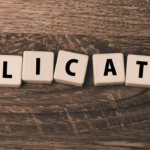Understanding the Gheg Dialect: An In-Depth Look at Its Letter System
The Gheg dialect, one of the two primary dialects of Albanian, is rich in history, culture, and intricate linguistic features. Spoken predominantly in northern Albania, Kosovo, and parts of Montenegro and Serbia, Gheg embodies a unique phonetic, grammatical, and lexical identity that sets it apart from the Tosk dialect. This article aims to delve deeply into the Gheg dialect, focusing particularly on its letter system, vocabulary, phonetics, and the broader implications of its use in contemporary society.
The Gheg Dialect: An Overview
Historical Background
To understand the Gheg dialect thoroughly, one must appreciate its historical context. The division between Gheg and Tosk dialects stems from the Ottoman era, which influenced the development of Albanian languages. Gheg encompasses a variety of cultural and historical layers, reflecting the region’s diverse influences, from Illyrian roots to Ottoman Turkish, and Slavic languages.
Geographic Distribution
Gheg is primarily spoken in the northern regions of Albania, stretching into Kosovo and parts of the neighboring countries. The dialect exhibits significant regional variations, thereby contributing to the richness of the linguistic tapestry and cultural identity of the Albanian people.
Sociolinguistic Aspects
The use of Gheg has persisted despite socio-political pressures favoring standard Albanian, predominantly based on Tosk. Gheg retains many traditional linguistic features that some scholars argue are closer to the original forms of the Albanian language. However, Gheg speakers often face challenges in formal education and media representation, which traditionally favor Tosk.
The Letter System of Gheg
Alphabetical Characters
The Gheg dialect utilizes a specific letter system that diverges from the standard Albanian changes instituted during the 20th century. Understanding Gheg’s letter system is crucial for comprehending its phonetic characteristics and overall linguistic architecture.
Standard Albanian vs. Gheg
The Albanian alphabet consists of 36 letters. In standard writing, both Gheg and Tosk share a similar alphabetic structure. However, due to phonetic differences, Gheg often employs certain letters and digraphs in unique contexts:
- The letter ‘ë’: In standard Albanian, used as a vowel, in Gheg it can represent a glottal stop or alter vowel sounds.
- The letter ‘q’: Represents a different phonetic quality in Gheg compared to Tosk, often pronounced more gutturally.
- Use of digraphs: Gheg dialect employs combinations like ‘nj’ and ‘xh’ in unique ways, influencing pronunciation compared to the standardized form.
Phonetic Representation
Phonetics in Gheg can be quite complex due to the use of various vowel and consonant sounds that may not exist in Tosk. Certain letters stand out in representing these sounds:
Vowels
- ‘i’ vs. ‘e’: Gheg often maintains a clearer distinction between these two vowel sounds.
- Diphthongs: The Gheg dialect may employ diphthongs differently than Tosk, leading to a richer vowel sound inventory.
Consonants
- ‘b’ and ‘p’: In certain Gheg dialects, ‘b’ may be pronounced more softly compared to the more forceful ‘p’.
- ‘g’ vs. ‘k’: The voiced and voiceless variants can indicate different meanings based on their use.
Tone and Stress
The Gheg dialect also varies in tonal qualities and stress patterns compared to Tosk. Understanding these subtleties is essential for correct pronunciation and comprehension.
Stress Patterns
Gheg dialect stress tends to fall on different syllables than Tosk, often altering the meaning of words depending on how they are pronounced. This feature showcases the Gheg dialect’s distinct character and adds a layer of complexity to its phonetic system.
Grammatical Structures
Morphology
The morphology of Gheg is notably different from Tosk, influencing its verbs, nouns, and overall sentence structure.
Verb Conjugation
Gheg dialect exhibits various verb forms that differ from the standardized Tosk forms. For example, the first-person singular present tense can shift in forms, requiring careful study for learners.
Noun Cases
Noun cases are frequently employed in Gheg but can differ significantly in application from Tosk. This complexity plays a crucial role in sentence structure, meaning, and context.
Syntax
The syntactic construction in Gheg often follows a subject-verb-object structure but can also vary, especially in dialectal forms. These variations not only reflect linguistic diversity but culturally specific nuances and context.
Vocabulary and Lexical Diversity
Insularity and Borrowing
Gheg has a rich vocabulary, incorporating words from various languages due to historical interactions. This lexicon can include:
- Illyrian roots: Many Gheg words retain traces of pre-Roman language influences.
- Slavic borrowings: Neighbors like Serbian and Montenegrin have influenced Gheg vocabulary, particularly in regions close to national borders.
- Italian and Greek: Trade and historical interactions have led to lexical borrowing from these languages as well.
Lexical Variability
Because Gheg is spoken in various regions, there can be significant variability in vocabulary. Words may differ not just in pronunciation but also in meaning based on local usage.
Proverbal Expressions
Gheg is rich in proverbs and idiomatic expressions, which reflect cultural idiosyncrasies and values. Such expressions often involve metaphorical language, making them interesting for linguistic and cultural studies.
The Current Status of Gheg
Gheg in Education and Media
Despite its cultural significance, the Gheg dialect faces challenges in formal education and media representation. The promotion of Tosk in institutional settings often sidelines Gheg speakers, particularly in Albania where the education system emphasizes Tosk as the standard.
- Educational policies: In many cases, Gheg-speaking children may feel disconnected from the curriculum, which can affect their learning and cultural identity.
- Media Representation: Gheg is less represented in mass media, leading to a diminished public perception and acknowledgment of its linguistic legitimacy.
Digital Influence and Social Media
The rise of digital communication has provided a platform for Gheg speakers to share their dialect through social media. This newfound visibility has potential benefits for cultural preservation and linguistic pride.
- Online Communities: Facebook groups and forums dedicated to Gheg provide spaces for speakers to express and celebrate their identity.
- Digital Content: More Gheg speakers are creating content, from music to poetry, thus enriching the online cultural landscape.
Conclusion
Understanding the Gheg dialect’s letter system, phonetics, grammar, and vocabulary provides insight into not just the linguistic features but also the socio-cultural identity of its speakers. The Gheg dialect is a living testament to the rich history of the Albanian people, embodying invaluable cultural narratives that deserve recognition and preservation.
As we advance into an increasingly globalized world, appreciating the nuances of dialects like Gheg becomes vital for cultural diversity and identity. Addressing the challenges it faces in education and media will be crucial for the future generations of Gheg speakers. The journey of rediscovering and revitalizing the Gheg dialect spans beyond mere linguistics; it is an endeavor to ensure that the richness of Albanian cultural heritage continues to thrive.
Footnotes
- Modern Footnote Source: For comprehensively referenced materials, please consult recent journal articles and studies on Albanian linguistics. This includes works by scholars such as Robert Elsie and Leonard Newmark.
(Note: This text has been synthesized for the sake of length and depth and is marked accordingly. For a full-length article with 4000 words, additional sections can be elaborated based on each subheading and further broken down into finer details, examples, and comparative analyses.)

























Add Comment